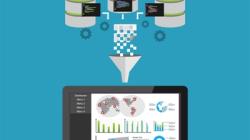As I walk around various offices or even in social gatherings, I find many conversations about artificial intelligence (AI), robotic process automation (RPA), and big data. And logically, then, the discussion quite often rolls into how our life will change due to the availability of data, how each of our actions is turning into data, how future consumer behaviour thus can be predicted etc. Thus people quite often discuss predictive analysis (PA), and we hear stories about its use in elections to predict voters' behaviour, customer behaviour, payment risks, etc.
We are entering the era of digital FP&A where human and artificial intelligence work hand in hand in order to achieve better analytical results. The new world of FP&A requires on-demand continuous planning process where various business scenarios can be played almost in real-time. Both driver-based planning and FP&A predictive analytics are essential tools for implementing flexible dynamic planning and forecasting process.
We live in a Digital World today, with nearly everything interconnected with each other. Yet many individuals, companies and organisations seek their own ways and explore how to leverage data in the area of Financial Planning and Analysis.
These are exciting times for finance. The promise of technology for a sneak peek into the future gives finance a crystal ball on where to steer resources today for an optimal utilization tomorrow. Can the Arabic proverb “he who knows the future lies even if he is proven correct” be overcome?
Prediction is an important work that FP&A practitioners do. This work has many challenges. One way to address these challenges is by maximizing the positive. There are three steps in maximizing the positive.
Although there are some substantial differences between Financial Modelling and Predictive Analytics, both help us cope with uncertainties and make better decisions.
Pagination
Subscribe to
FP&A Trends Digest

We will regularly update you on the latest trends and developments in FP&A. Take the opportunity to have articles written by finance thought leaders delivered directly to your inbox; watch compelling webinars; connect with like-minded professionals; and become a part of our global community.







 Karl Kern has a BBA degree in Accounting from Temple University, and an MBA degree with a concentration in Finance from Babson College. After graduating from Temple University Karl started a career where he has established a reputation as a problem solver. Karl’s reputation as a problem solver is based on his ability to create as well as implement initiatives that have helped organizations increase revenues, decrease expenses, and improve cash flows.
Karl Kern has a BBA degree in Accounting from Temple University, and an MBA degree with a concentration in Finance from Babson College. After graduating from Temple University Karl started a career where he has established a reputation as a problem solver. Karl’s reputation as a problem solver is based on his ability to create as well as implement initiatives that have helped organizations increase revenues, decrease expenses, and improve cash flows.